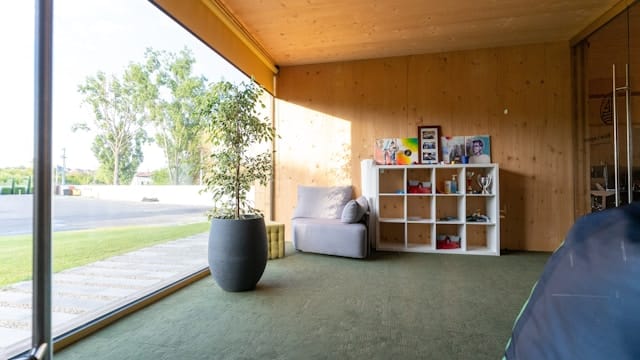What’s the Best Method to Waterproof a Basement Recreation Room?

With the rapid urban development these days, homeowners are constantly seeking means to maximize their space. One of the best ways to achieve this is by transforming the basement into a recreation room. Your basement can serve as a family lounge, game room or an extended guest room. However, waterproofing is a crucial step to ensure that your basement recreation room is comfortable and safe to use. This article will guide you through the best methods of waterproofing your basement.
Understanding the Basics of Basement Waterproofing
Before we delve into the best waterproofing methods, it’s important to understand the basics of basement waterproofing. Remember, your basement is below ground level and therefore, more susceptible to water intrusion and moisture. The water can seep into your basement through cracks on the walls, floor, and the foundation. Besides, water can also find its way into your basement due to poor drainage system around the perimeter of your house.
Cela peut vous intéresser : How to Create a DIY Rooftop Garden for Urban Agriculture?
Your basement’s walls and floors are most likely made out of concrete, a porous material that allows water to penetrate. Mold can also be a direct result of water and moisture in the basement. Proper waterproofing can prevent this happening. Hence, it is of extreme importance to have your basement waterproofed.
Exterior Waterproofing – The Best Preventive Method
Exterior waterproofing serves as the first line of defense against water intrusion. This method involves excavating the ground around the house down to the foundation level. A waterproof coating or membrane is then applied to the exterior walls of the basement to prevent water from penetrating into the basement. A drainage system is also installed at the base of the foundation to redirect the water away from the basement.
A lire également : How Can You Retrofit an Older Home with Smart Home Technology While Preserving Its Historical Integrity?
This is a highly effective method as it tackles the problem at its source. It prevents water from ever making contact with the basement walls. Although this method is often more expensive and labor-intensive, it provides the best long-term solution to keep your basement dry.
Interior Waterproofing – An Essential Line of Defense
While exterior waterproofing prevents water from entering the basement, interior waterproofing deals with water that has already made its way inside. This method involves the use of sealants and coatings applied to the basement walls and floor.
The sealants help to close off the pores in the concrete, making it harder for water to penetrate. Moreover, if your basement has cracks or gaps, they should be filled up using hydraulic cement before applying the waterproof coatings.
In addition, a sump pump system can also be installed to manage water accumulation. The sump pump system collects water that enters the basement, and then pumps it back outside, keeping the basement dry.
Drainage Systems – Keeping Water at Bay
A good drainage system is a crucial part of the basement waterproofing process. Both interior and exterior drainage systems have their roles in keeping your basement dry. The exterior drainage system prevents water from reaching your basement walls, while the interior drainage system deals with water that has already entered.
The exterior drainage system involves the installation of drain pipes around the perimeter of your house, buried just next to the foundation. These pipes collect rainwater and ground water, routing it away from the foundation.
For the interior, the system is installed underneath the basement floor, alongside the perimeter. This system collects water that has seeped into the basement and channels it to the sump pump, which then pumps the water out.
Choosing the Right Waterproofing Method
In determining the best waterproofing method, you’ll have to consider several factors. These factors include the source of the water, the severity of the moisture problem, and your budget.
For instance, if your basement has minor moisture issues, the interior waterproofing coupled with a good sump pump system may suffice. However, if your basement has a serious water intrusion problem, or if it’s located in a high water table area, then you might need to consider exterior waterproofing and a more robust drainage system.
In any case, the best approach is often a combination of methods. It’s advisable to consult with a professional waterproofing company. They can assess your basement’s condition, determine the source of water intrusion, and recommend the best waterproofing solution tailored to your needs.
Waterproofing the basement effectively converts it into a functional and livable space. A well-executed waterproofing job will not only keep the basement dry but also enhance the value of your home. So, you can enjoy your recreation room without any worries about water damage or mold growth.
Waterproofing Products – Aiding the Waterproofing Process
To aid in the process of waterproofing your basement, there are several products in the market that you can choose from. These range from waterproof paints and sealants to more specialized items such as sump pumps and drain tiles.
Waterproof paints and sealants are widely used in interior waterproofing. They offer a quick and relatively inexpensive solution to minor leaks and dampness. However, these are only surface solutions and may not be sufficient to tackle serious water intrusion problems.
For more serious water problems, a sump pump becomes essential. It is a device that collects water in a basin and then pumps it out of the basement. This can be particularly helpful in areas where the water table is above the foundation of the house. Some sump pumps also come with a battery backup system to ensure they keep working even during power outages.
Drain tiles, also known as a French drain, is another product that can be of great help. These are essentially perforated pipes that are installed in a gravel bed around the perimeter of the house or under the basement floor. The drain tile collects the water and directs it away from the house, preventing it from coming into contact with the basement walls.
Finally, there are the waterproofing membranes. These are sheets of waterproof material that are applied to the exterior walls of the basement. They serve as a barrier, preventing water from penetrating the walls and entering the basement.
Choosing the right product largely depends on the severity of your water intrusion problem, the source of the water, and your budget. Always remember to consult with a professional before making any decisions.
Conclusion – A Safe, Dry, and Usable Space
When it is all said and done, waterproofing your basement is all about creating a safe, dry, and usable space. Whether you’re dealing with minor dampness issues or serious water intrusion, there are waterproofing methods and products to address your problem.
Remember, while it’s possible to do some waterproofing tasks yourself, it’s always best to consult with a professional, particularly for more severe problems. They can assess your basement’s condition, identify the source of the water, and recommend the most effective solution.
By undertaking a thorough basement waterproofing job, you are not just creating a safe and comfortable recreation room, but also adding value to your home. Regular maintenance after waterproofing further ensures that your basement remains dry and free from any future water damage.
So, don’t let the threat of water intrusion stop you from utilizing your basement to its full potential. With the right waterproofing method, your basement can serve as a cozy family lounge, an exciting game room, or an inviting guest room. All it takes is understanding the problem, choosing the right solution, and taking the necessary steps to waterproof your basement.
